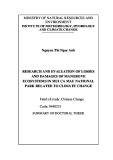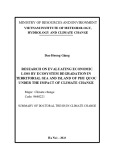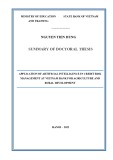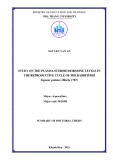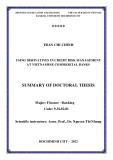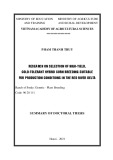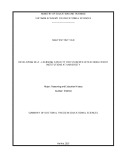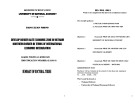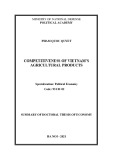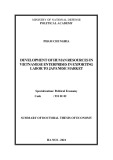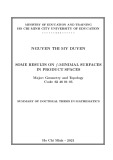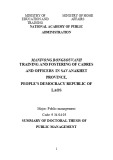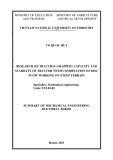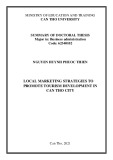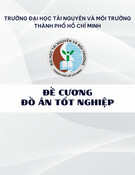
3
PREFACE
1. The urgency of the thesis
All activities in human life and production produce waste. Waste exists in solid, liquid
and gaseous form. In addition to inorganic and organic pollutants ... there are many
microorganisms in the water such as bacteria, viruses such as cholera, dysentery, typhoid, etc.
Therefore, disinfection of water is an indispensable process in water treatment technology.
Water disinfection is the process of eliminating potentially pathogenic microbes, which are
the necessary barrier and ultimately prevent human exposure to pathogenic microbes,
including viruses, bacteria, and protozoa. The basis of chemical disinfection is to use stronger
oxidizers to oxidize the yeast of microbial cells and destroy them. Commonly used chemicals
are: chlorine halides, bromine; chlorine dioxide; the hypoclorite and its salts; ozone, etc.
Highly effective chemical disinfection methods should be used extensively with many
different scales.
Chlorine is a strong oxidizer, in any form, pure or compound, chlorine acts to water
will generate hypochlorous acid (HOCl), a highly potent antiseptic. On the other hand,
Chlorine has the advantage of being able to maintain a small concentration in water for
relatively long periods of time to ensure resilience against water supply and storage.
Therefore, chlorine is still used most often for disinfection. Recently, many methods of
disinfection have been studied to replace chlorine, such as ozone, UV, bromine, etc. But there
is no alternative to chlorine. The current trend is to combine chlorine with other methods such
as UV irradiation to increase the effectiveness of disinfection and reduce the amount of
chlorine needed. One of commonly used method recently is UV / HOCl / ClO-.
However, the presence of chlorine in water can also lead to the formation of organic
chlorine compounds, which are responsible for cancer. Natural organic substances such as
humic acid, dissolved organic acids, amino acids and industrial organic pollutants are always
present in natural water. These organic compounds are often complex and can react with
chlorine to form hazardous compounds such as chloroform and trihalomethanes (THMs)
which including trichloromethane, dibromochoromethane, bromodichloromethane, etc. These
compounds Chlorophyll, especially in the human body, will cause damage to the liver and
kidney and has been demonstrated to be linked to the cause of cancer.
Under the influence of light, especially ultraviolet light, can lead to the dissociation of
HClO and ClO- ions that form free radicals. These free radicals can oxidize organic matters
and form various byproducts. The transformation of new contaminated organic compounds
and their by-products into the process is a new research trend in the field of analysis in the
world as well as in Vietnam.
2. Research objectives
Study on the transformation and identification of Paracetamol byproducts by UV /
HClO / ClO- in various environmental conditions.
3. Main research contents of the thesis
- Study on the degradation of Paracetamol by UV, Chlorination and UV/HOCl/ClO-.
- Study on factors affecting the degradation of Paracetamol by UV irradiation-only,
UV/NaClO oxidation.
- Study the optimum conditions to determine the by-products of oxidation by LC-MS/MS.






